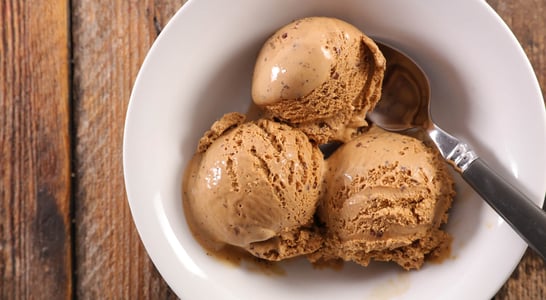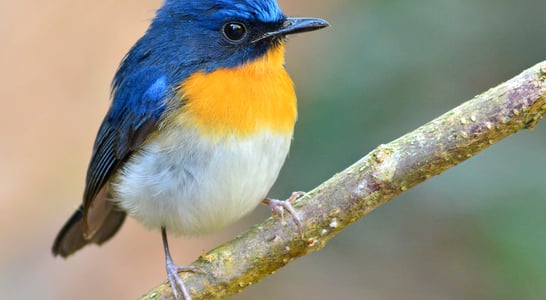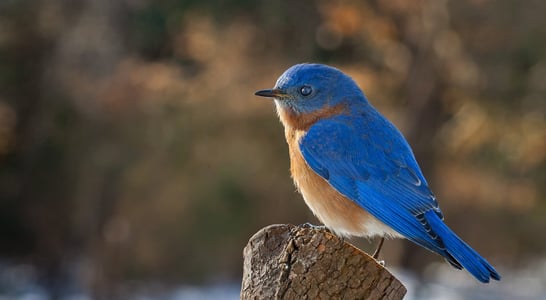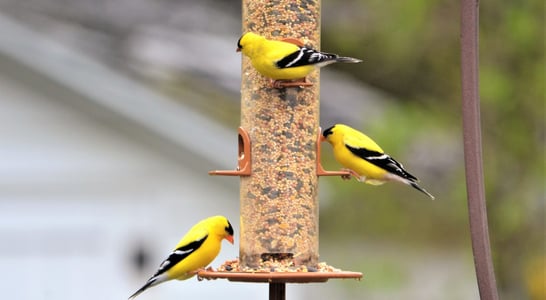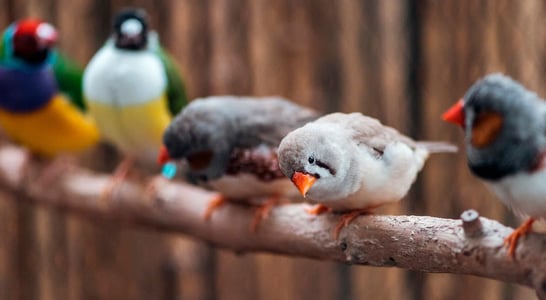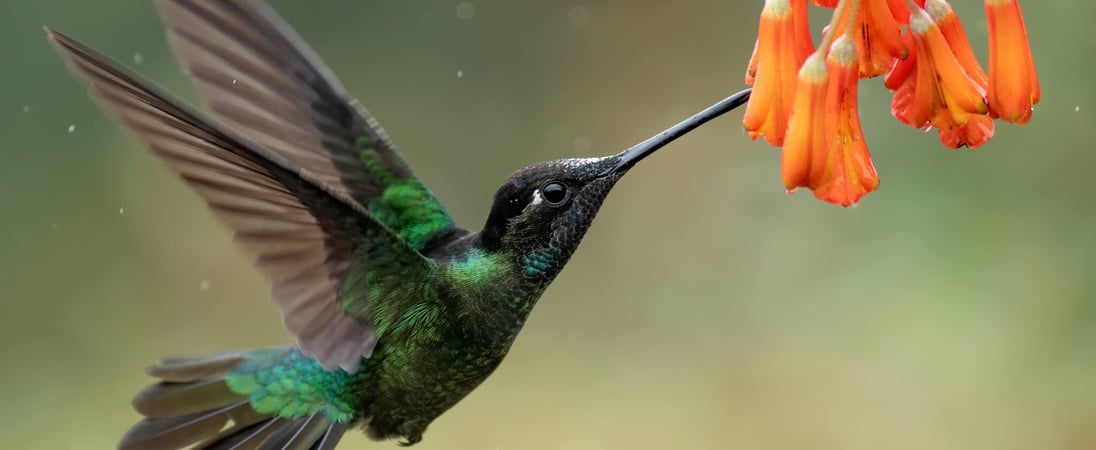
National Hummingbird Day
Graceful, vibrant creatures, these agile flyers paint the air with bursts of color, captivating nature's poetry in motion.
Hummingbirds are a vital part of the ecosystems where they live in North America and South America, ranging from Tierra del Fuego in southern Argentina all the way up to the lower parts of Alaska. Their important role in the food web includes pollinating different flowering plants with their long, slender beaks.
Because of climate changes and the impact on their habitat, all species of hummingbirds are currently on the list of vulnerable or endangered species through the IUCN Red List.
National Hummingbird Day is here to show appreciation for and honor these tiny little creatures.
How to Celebrate National Hummingbird Day
Enjoy learning a bit more and make an impact on nature by celebrating National Hummingbird Day with some fun plans:
Learn Facts about Hummingbirds
So many creatures in nature are absolutely fascinating and the hummingbird is no different! Celebrate National Hummingbird Day by learning and sharing a few facts about this captivating bird to raise awareness for the day. Get started with a few of these:
-
Hummingbirds are the smallest migrating bird but, unlike other birds, they usually travel alone – up to 500 miles at a time.
-
Hummingbirds don’t have a sense of smell so they are attracted by bright colors, which is why their feeders should be brightly decorated.
-
The name, “hummingbird” comes from the buzzing or humming noise that their wings make when they are flying. Their wings may beat up to 200 times per second.
-
Hummingbirds are extremely lightweight, comparable to a small coin (a US nickel) and can consume up to twice their body weight in one day.
Design a Hummingbird Friendly Garden
Show some love and appreciation for hummingbirds by inviting them into the garden at home! Hummingbird gardens do best when trellises, trees, sheds or fences are used to create height with climbing vines.
Nectar-producing flowering plants may be favorites, but they can be chosen based on whatever is native to the local area.
Plants with red or tubular flowers are favorites of hummingbirds. And, of course, install a hummingbird feeder that will help to attract and feed these sweet little birds all throughout the season.
Bird lovers can find a wide variety of ways to enjoy and celebrate these interesting creatures with days spread throughout the year, like National Bird Day in January, Feed the Birds Day in February, National Go Birding Day in April and many others!
History of National Hummingbird Day
Established in 1996, National Hummingbird Day was founded by bird lover Penny Elliston. Because August and September are some of the busiest times that hummingbirds appear in the northern hemisphere, this is a great time to celebrate these tiniest little birds!
National Hummingbird Day was established with the purpose of raising awareness for these tiny little birds, hoping that more people would get involved to make sure they are fed and cared for!
National Hummingbird Day FAQs
Did hummingbirds really evolve from dinosaurs?
Yes! Hummingbirds evolved from a group of small, meat-eating dinosaurs called theropods.
Scientists believe their rapid wing movements and agility developed from early bird ancestors that needed to outmaneuver predators.
Fossil evidence shows that some prehistoric birds already had fast metabolism and specialized flight skills, traits that eventually led to the high-energy hummingbirds we see today.
What’s the smallest and largest hummingbird species?
The bee hummingbird, native to Cuba, holds the record as the world’s smallest bird, weighing less than a dime.
On the other end, the giant hummingbird of South America is about the size of a starling and flaps its wings much slower than smaller hummingbirds.
Despite their size difference, both species share the same high-speed metabolism that makes hummingbirds so fascinating.
Can a hummingbird recognize individual humans?
Yes! Hummingbirds have excellent memory and can recognize people who regularly feed them.
If you consistently provide nectar, a hummingbird may associate you with food and even approach you when hungry.
Some birdwatchers report that their backyard hummingbirds hover near them as if asking for a refill!
What’s the strangest place a hummingbird has been spotted?
Hummingbirds are native to the Americas, but in rare cases, they have accidentally traveled far beyond their usual range.
In 2005, a rufous hummingbird was spotted in the UK—a country with zero native hummingbirds! The little traveler likely got caught in strong winds or hitched a ride on a ship before being seen in a British garden.
How do hummingbirds sleep, and do they dream?
Hummingbirds enter a deep sleep-like state called torpor, where their body temperature drops dramatically to conserve energy.
During this state, they sometimes hang upside down from branches, appearing lifeless.
While no one knows for sure if hummingbirds dream, some scientists suspect they might, given their complex brains and rapid-eye movement (REM) sleep patterns.
What’s a hummingbird’s biggest predator?
Despite their speed, hummingbirds are vulnerable to larger birds like hawks and roadrunners.
However, one surprising predator is the praying mantis! These insects have been observed ambushing and grabbing hummingbirds at feeders. Some spider species have also been known to trap small hummingbirds in their webs.
What’s the most expensive hummingbird-related item ever sold?
In the 1800s, Victorian fashion trends led to the creation of elaborate hats decorated with real hummingbird feathers—and even entire preserved hummingbirds.
These hats were so popular that rare hummingbird specimens fetched massive prices at auctions.
Today, preserved hummingbirds from that era are still sold as collectibles, sometimes reaching thousands of dollars.
Why do some hummingbirds fight so much?
Hummingbirds are surprisingly aggressive! They fiercely guard food sources and chase away rivals, sometimes engaging in aerial dogfights.
Males of some species even perform midair “sword fights” with their beaks, battling for dominance. This territorial behavior ensures they get enough nectar to fuel their ultra-fast metabolism.
What’s the fastest a hummingbird has ever flown?
The Anna’s hummingbird has been recorded diving at speeds over 60 miles per hour, making it the fastest bird relative to its body size.
Scientists discovered that during these dives, the tiny bird experiences g-forces similar to those of a fighter jet pilot! These dives are usually part of elaborate courtship displays.
Do hummingbirds have any role in folklore outside of the Americas?
Although hummingbirds are native to the Americas, some European and Asian cultures have adopted them as symbols in art and literature.
In Japan, they are sometimes included in kimono patterns as a symbol of fleeting beauty.
In parts of Africa, hummingbird images have appeared in modern artwork, often used to represent perseverance and adaptability, despite the birds never having existed there.
See what else is happening…
There’s always more going on every month at Days Of The Year. Here are our favorites this month!
Also on ...
View all holidaysNational Coffee Ice Cream Day
Go get yourself some coffee flavored ice cream, make it at home, or try a delicious affogato: a dollop of ice cream “drowned” in some rich espresso.
International Bacon Day
Crispy, savory strips that make breakfast extra awesome. It's like a delicious high-five for your taste buds!
National Read a Book Day
Once upon a time, a reader's journey began with a book in hand, and adventures unfolded within its pages. Let your imagination soar with every page turn!
World Beard Day
A distinguishing feature of masculinity, beards can offer a sense of ruggedness or refinement depending on the style.
We think you may also like...
National Bird Day
Don your binoculars to spy these feathered friends in the wild, contribute to conservation efforts or raise awareness of birds in captivity.
Feed the Birds Day
The winter months can be hard on birds, which is why Feed the Birds Day is a day that is dedicated to paying attention to the welfare and survival of those little backyard friends!
